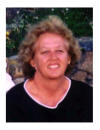Advance Program
Day 1: January 24, 2007 (Held at Clock Tower Centennial Hall)
| |
Centennial Hall (1st floor) |
Conference Room III (2nd floor) |
9:15 |
Registration Desk Opens |
9:45 - 10:00 |
Opening Remarks |
|
10:00 - 11:00 |
Keynote Talk
The Future of Thinking
Marc Stiegler, Visiting Scholar, HP Labs
|
|
11:00 - 11:15 |
Coffee Break |
11:15 - 12:45 |
Session 1A (Chair: John David Miller)
Experiences in Education |
Session 1B (Chair: Kim Rose)
Web- and Wiki-based collaboration environments |
12:45 - 14:15 |
Lunch Break |
14:15 - 15:45 |
Session 2A (Chair: Masahiro Fujita)
Searching and Indexing |
Session 2B (Chair: David Smith)
Social and artistic topics |
15:45 - 16:00 |
Coffee Break |
16:00 - 17:30 |
Panel
Who can afford wonderful ideas?
|
|
18:00 - 20:00 |
Banquet |
Day 2: January 25, 2007 (Held at Clock Tower Centennial Hall (morning) and Academic Center for Computing and Media Studies, South Bldg. (afternoon)
| |
Centennial Hall (1st floor)
(Clock Tower Centennial Hall) |
Conference Room III (2nd floor)
(Clock Tower Centennial Hall) |
9:00 |
Registration Desk Opens |
9:30 - 10:30 |
Keynote Talk
NEW MEDIA DESIGN
Kristina Hooper Woolsey, New Media Thinking Project
| |
10:30 - 10:50 |
Coffee Break |
10:50 - 12:50 |
Session 3A (Chair: Toshiyuki Takeda)
Web and grid services |
Session 3B (Chair: Rick McGeer)
Croquet and Miramar (3D Collaboration Environments) |
12:50 - 14:20 |
Lunch Break |
| |
Room 201 (2nd floor)
(Academic Center for Computing and Media Studies, South Bldg.) |
Room 202 (2nd floor)
(Academic Center for Computing and Media Studies, South Bldg.) |
14:20 - 16:20 |
Session 4A (Chair: Benay Dara-Abrams)
Distributed algorithms |
Session 4B (Chair: Serge Stinckwich)
Programming languages and techniques |
16:20 - 16:30 |
Closing Remarks |
|
Day 3: January 26, 2007 (Held at Academic Center for Computing and Media Studies, South Bldg.)
| |
Room 201 (2nd floor) |
Room 202 (2nd floor) |
9:30 - 12:00 |
Workshop 1
Creating Multi-Intelligent User Experiences through Digital Media |
Workshop 2
Beyond education: How can Squeak make a lasting impression in developing commercial software
|
12:00 - 13:20 |
Lunch Break |
13:20 - 17:00 |
Field Trip
Ritsumeikan Elementary School and Horikawa High School
(by Charter Bus, extra fee 1,000 JPY required)
|
Panel
Who can afford wonderful ideas? On the infrastructure of ICT in developing countries
| Moderator: | Chigusa Kita, Kansai University, Japan |
| Panelists: | Bernard Krisher, Japan Relief for Cambodia and American Assistance for Cambodia
Yumiko Mori, NPO Pangaea, Japan
Yoshiki Ohshima, Viewpoints Research Institute, USA |
| Topic: |
This panel is organized on the common theme between IWIC (International Workshop on Intercultural Collaboration) and C5 held at the same place and time frame. Since the C5 has been mainly organized by developers of Squeak, which is an open source program-ming language runs on any platform, some participants are interested in constructing computing environment for schools in developing countries.
IWIC participants, of course, are also interested in computing and network infrastructure worldwide to collaborate with people who speak minor languages or live in remote places.
Such a beautiful picture of intercultural collaboration should be affordable to everybody, but how?
(IWIC participants are welcome to attend this panel.)
|
Workshop Program
Creating Multi-Intelligent User Experiences through Digital Media
| Organizers: |
Benay Dara-Abrams, DALaboratories
Cassie Dara-Abrams, Connecting Youth to Youth and DALaboratories
|
| Topic: |
In 1983, Howard Gardner published the Theory of Multiple Intelligences, stating that humans possess multiple intellectual capabilities rather than one single intelligence quotient. At this point, Gardner states that there are at least eight different intelligences that people use to process information. In addition, Gardner believes that these intellectual capacities are not only inborn but also they can be developed over time. However, most of our classroom instruction and many of the online user experiences we offer primarily activate two of our intelligences: Linguistic and Logical-Mathematical. Digital media can offer ways to activate and strengthen the other six intelligences: Spatial, Musical, Naturalist, Bodily-Kinesthetic, Interpersonal, and Intrapersonal. These other intelligences can be used as entry points into digital user experiences to attract and hold the attention of different populations of users who may not process information as well through their Linguistic or Logical-Mathematical intelligences.
In this workshop, we will use some online instruments and interactive activities to assess our own profiles of multiple intelligences. We will demonstrate digital media and applications for different populations (including youth and adults over 50 years old) that take into account varying profiles of multiple intelligences. We will work in groups to storyboard user experiences that activate different intelligences. Each group will then present its storyboard to other workshop participants for discussion.
|
Beyond Education: How can Squeak Make a Lasting Impression in Developing
Commercial Software
| Organizers: |
Tansel Ersavas, Blue Plane Pty Ltd.
John T. Magnifico, Blue Plane Pty. Ltd. |
| Topic: |
Squeak is an incredible tool and a medium already used very successfully for
education, but is that it? Is Squeak a viable alternative to various
development tools in the industry? What are other strengths of Squeak? What
are applications developed in Squeak? What is required to make Squeak more
appealing to development communities?
The purpose of this workshop is to show how Squeak is currently used to
develop commercial software. We will provide examples from working systems
and then discuss issues and areas of enhancement for Squeak to be a more
powerful tool for collaborative systems development.
During the workshop we will discuss current tools that are used for
collaborative, development and support in and outside of Squeak. We will
start to determine the models, processes and systems that currently exist in
other languages and how some or all of these mechanisms could be fully
incorporated into Squeak. We will also highlight the impact such systems
would have on the development of both educational and commercial software.
|



 .
.